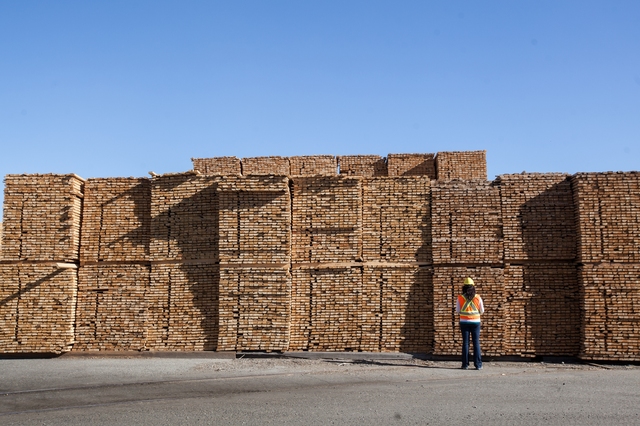
Timber exports to Canada are assessed as very positive. Photo: Internet
According to the Ministry of Industry and Trade , Canada is one of the top 10 furniture manufacturers in the world. However, in recent years, Canada has become a net importer of furniture products. In the period 2014 - 2021, the country imported about 7 billion USD/year, the most from China and the US, while Vietnam ranked 13th.
The Vietnamese wood industry in Canada is beginning to make sustainability commitments, with the goal of effectively managing forest resources and protecting the environment. Wood products from Vietnam are increasingly dominating the Canadian market thanks to factors such as sustainable materials, environmentally friendly production and compliance with international standards.
The Vietnamese government and businesses are working hard to ensure that the wood industry develops sustainably, from afforestation, logging to the production process, to meet the growing demand of domestic and export markets, while protecting natural resources.According to Ngo Sy Hoai, General Secretary of the Vietnam Timber and Forest Products Association, relatively positive figures show that Vietnamese wooden furniture has met the consumption needs of Canada. Each year, this market has 400,000 more immigrants, so the demand for wooden furniture is very large. Along with that, the positive impact of the Comprehensive and Progressive Agreement for Trans- Pacific Partnership (CPTPP) has also helped businesses boost exports.
The prospect of increasing wood exports to Canada is considered very positive. If this market is exploited well, Vietnam's wood products and interior decoration will have more opportunities to promote to other markets in the North American region. It is forecasted that in the coming months, the export turnover to Canada will continue to grow.
Currently, Vietnam is asserting its position in the global wood market, ranking 2nd in Asia and 5th in the world in terms of wood product export value. By 2025, the Government has set a target of wood exports reaching 20 billion USD, showing the great potential of this industry. However, along with strong development comes the responsibility to ensure sustainable and ethical wood supply.
Through certification, Vietnamese manufacturers can confidently choose Canadian wood for its sustainability. Photo: Canadian Wood
Vietnamese wood enterprises need to comply with international regulations: Vietnamese wood exporting enterprises need to comply with Canadian regulations on the origin and traceability of wood (such as the Lacey Act). The Vietnamese government can support enterprises through policies that encourage sustainable development. Wood products need to be certified according to international standards such as the Forest Stewardship Council (FSC) or the Programme for the Endorsement of Forest Certification (PEFC) to increase competitiveness in the Canadian market. Organize training courses for people and enterprises on sustainability standards and certification processes. Implement sustainable forest management measures to protect the environment and maintain resources. Establish a forest status monitoring system and regular reporting to ensure transparency and accountability. Strengthen cooperation with specialized organizations and agencies to learn from experience and improve production processes. Establish long-term trade relationships with partners in Canada, ensuring that sustainability standards are followed. Along with that, promote Research and Development: Invest in research and development of wood processing technology to improve efficiency and minimize environmental impact; Exploiting renewable raw materials : Encourage the use of raw materials from renewable sources or alternative materials to reduce pressure on forests. Commitment to environmental protection and sustainable development is a continuous process, requiring the participation of the community, the state and businesses. With close cooperation and concerted efforts, the Vietnamese wood industry can build a positive and sustainable image in the Canadian market./.




























![[Photo] National Assembly Chairman attends the seminar "Building and operating an international financial center and recommendations for Vietnam"](https://vphoto.vietnam.vn/thumb/1200x675/vietnam/resource/IMAGE/2025/7/28/76393436936e457db31ec84433289f72)






































































Comment (0)